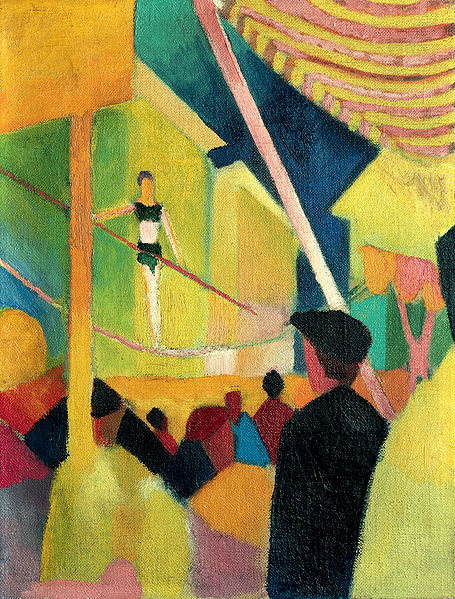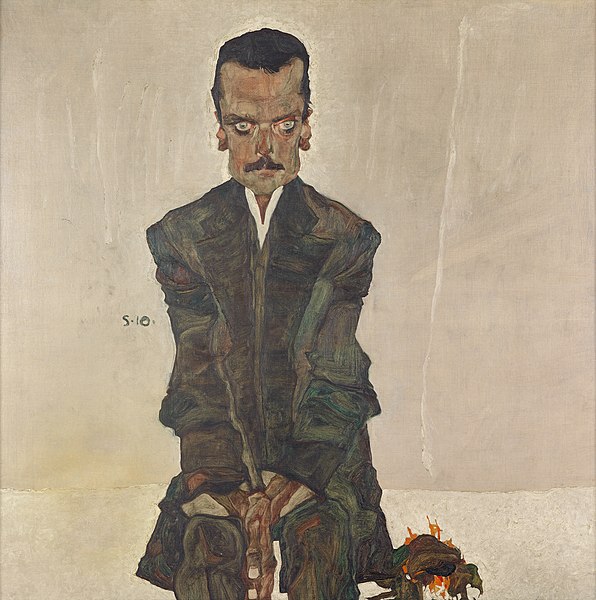August Robert Ludwig Macke was a German Expressionist painter. He was one of the leading members of the German Expressionist group Der Blaue Reiter. He lived during a particularly active time for German art: he saw the development of the main German Expressionist movements as well as the arrival of the successive avant-garde movements which were forming in the rest of Europe. As an artist of his time, Macke knew how to integrate into his painting the elements of the avant-garde which most interested him. Like his friend Franz Marc and Otto Soltau, he was one of the young German artists who died in the First World War.
August Macke, Self-portrait, 1906, oil on canvas
Street with church in Kandern, 1911
Rokoko,1912, oil on canvas, 89 x 89 cm, National Museum of Art, Architecture and Design, Norway
Tightrope walker, 1913
Expressionism is a modernist movement, initially in poetry and painting, originating in Northern Europe around the beginning of the 20th century. Its typical trait is to present the world solely from a subjective perspective, distorting it radically for emotional effect in order to evoke moods or ideas. Expressionist artists have sought to express the meaning of emotional experience rather than physical reality.
Edvard Munch, The Scream, c.1893, oil, tempera and pastel on cardboard, 91 × 73 cm, National Gallery of Norway, inspired 20th-century expressionists.
El Greco, View of Toledo, c.1595/1610 is a Mannerist precursor of 20th-century expressionism.
Wassily Kandinsky, Der Blaue Reiter, c.1903
Egon Schiele, Portrait of Eduard Kosmack, c.1910, oil on canvas, 100 × 100 cm, Österreichische Galerie Belvedere








